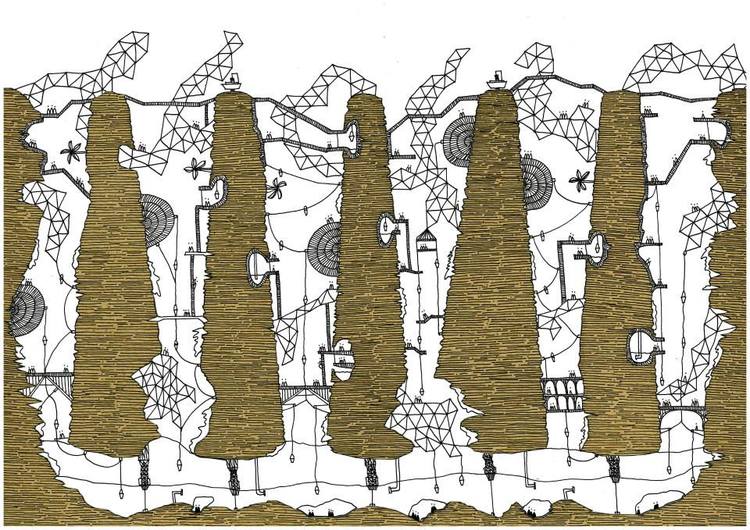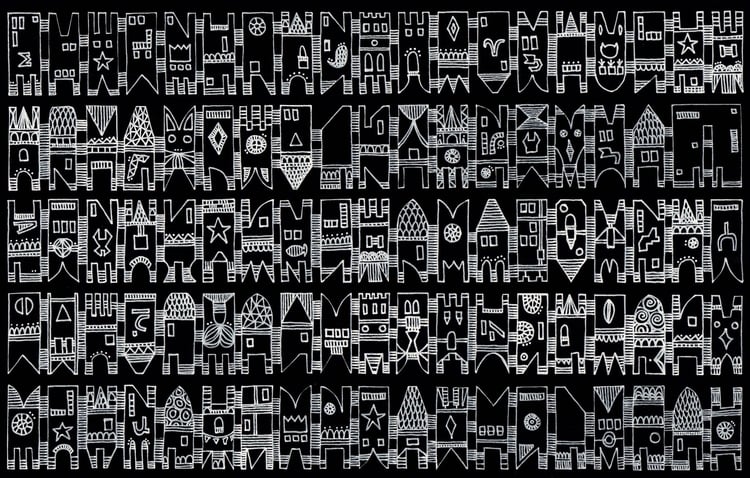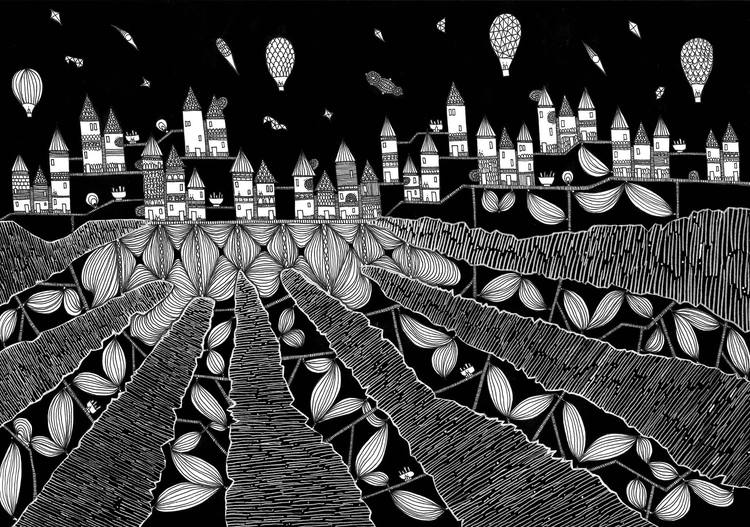Kublai Khan does not necessarily believe everything Marco Polo says when he describes the cities visited on his expeditions, but the emperor of the Tartars does continue listening to the young Venetian with greater attention and curiosity than he shows any other messenger or explorer of his.
The cities in Italo Calvino’s novel are metaphors for cities. And for our experiences, alone and together, within the walls we construct around ourselves, walls being metaphors themselves. And are metaphors for other metaphors. And for much else our walls cannot contain, what escapes our most rigorous designs, what exists within, beneath, and above the surface of our intentions. As Marco Polo tells us,
“Cities, like dreams, are made of desires and fears, even if the thread of their discourse is secret, their rules are absurd, their perspectives deceitful, and everything conceals something else.”
Karina Puente, an architect and urbanist based in Lima, Peru, who has worked on plans for the Lima of the future, has also begun illustrating each of Calvino’s 55 cities. The drawings capture much from the text, but they also have a magic of their own. Her progress can be found at her site here, and you can learn more about Karina and the project in this interview at Kindle.
Above, Isaura, the city of a thousand wells, whose borders are determined by a subterranean lake beneath, its design by all that is needed to extract the water.
Consequently two forms of religion exist in Isaura. The city’s gods, according to some people, live in the depths, in the black lake that feeds the underground streams. According to others, the gods live in the buckets that rise, suspended from a cable, as they appear over the edge of the wells,
And live in all the other apparatus and construction that brings the water to the top. It is a city “that moves entirely upward.”
Tamara is a city of signs:
You penetrate it along streets thick with signboards jutting from the walls. The eye does not see things but images of things that mean other things: pincers point out the tooth-drawer’s house; a tankard, the tavern; halberds, the barracks; scales, the grocer’s. Statues and shields depict lions, dolphins, towers, stars: a sign that something—who knows what?—has as its sign a lion or a dolphin or a tower or a star.
The city explains itself in these signs. Yet:
However the city may really be, beneath this thick coating of signs, whatever it may contain or conceal, you leave Tamara without having discovered it.
Anastasia has concentric canals and much in it streets that captures our senses and feeds our desires.
The city appears to you as a whole where no desire is lost and of which you are a part, and since it enjoys everything you do not enjoy, you can do nothing but inhabit this desire and be content.
However for those who work to give shape to these desires
your labor which gives form to desire takes from desire its form
And we end being Anastasia’s slaves.
As for Kublai Khan, as for all of us, the narrator tells us,
In the lives of emperors there is a moment which follows pride in the boundless extension of the territories we have conquered, and the melancholy and relief of knowing we shall soon give up any thought of knowing and understanding them.



One of my favourite ever books.
This is fantastic! Thanks for sharing this, Gary.
Do let Karina know, guys. There’s a contact form on her site, which I’ve linked.
I’d like to add a note. Calvino’s novel is an incredibly sophisticated and baffling book, yet it is appealing and accessible on a simple literal and visual level. I taught it to community college composition students and had them create another city. Instructions for such an assignment one would think would be quite complex and confusing. But my assignment was simply this: “Kublai Khan, who may or may not be the same person as your instructor, is bored. Create another city.” The results were good. We learn by doing, and by exercising our literary imagination, which we all have.
It is also popular in the architecture community. I found this comment online at an architecture site:
“In fact, as a professor of Urban planning, a reading of the book, followed by ‘draw one of the invisible cities’ is a common exercise I do with all students starting out their third year in the course of Architecture.”
Apparently Karina’s contact page is not working. Here is her Facebook page:
https://www.facebook.com/karina.puente.104
And this Facebook page focuses on her illustrations, with many more pictures:
https://www.facebook.com/karinapuenteilustracion/